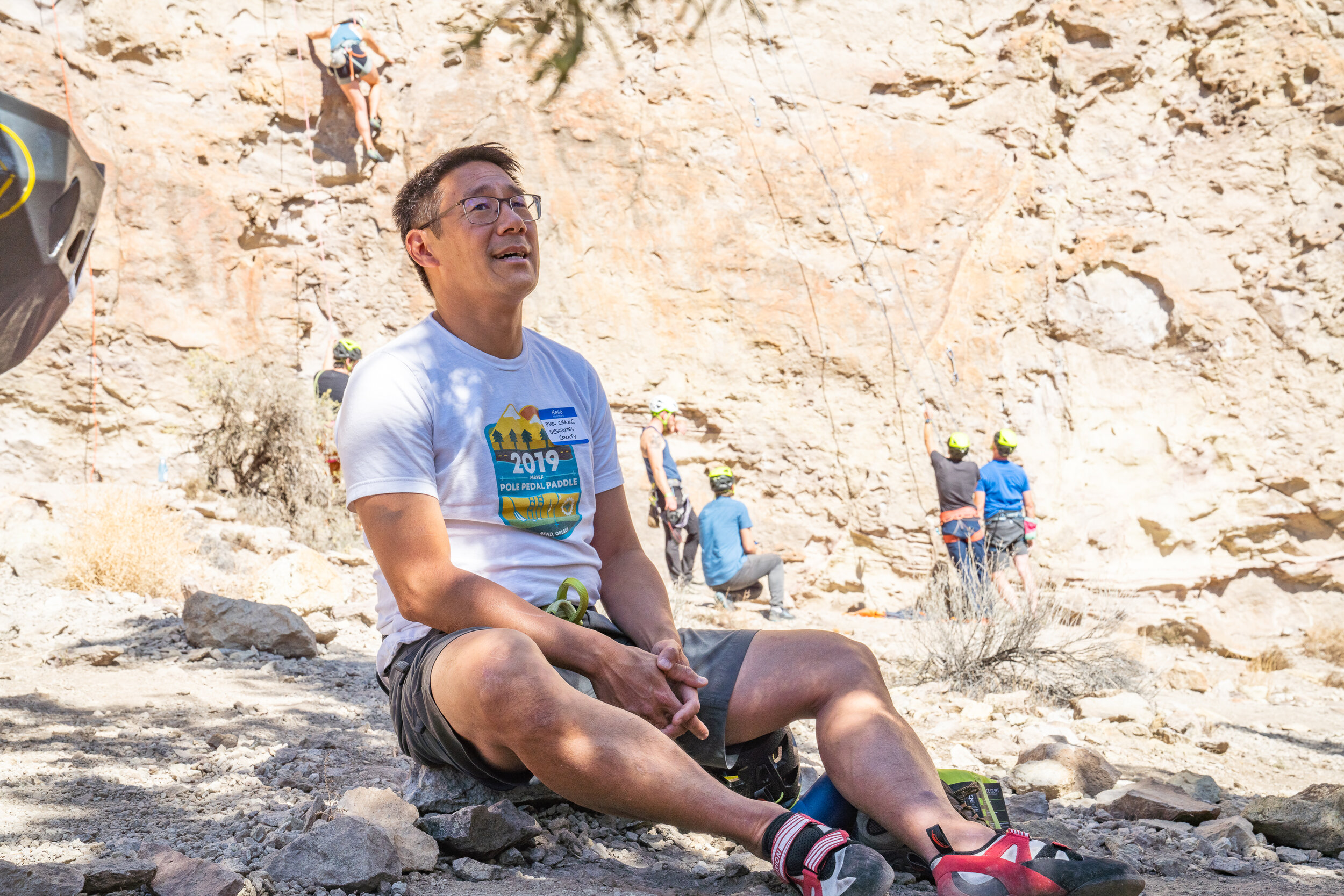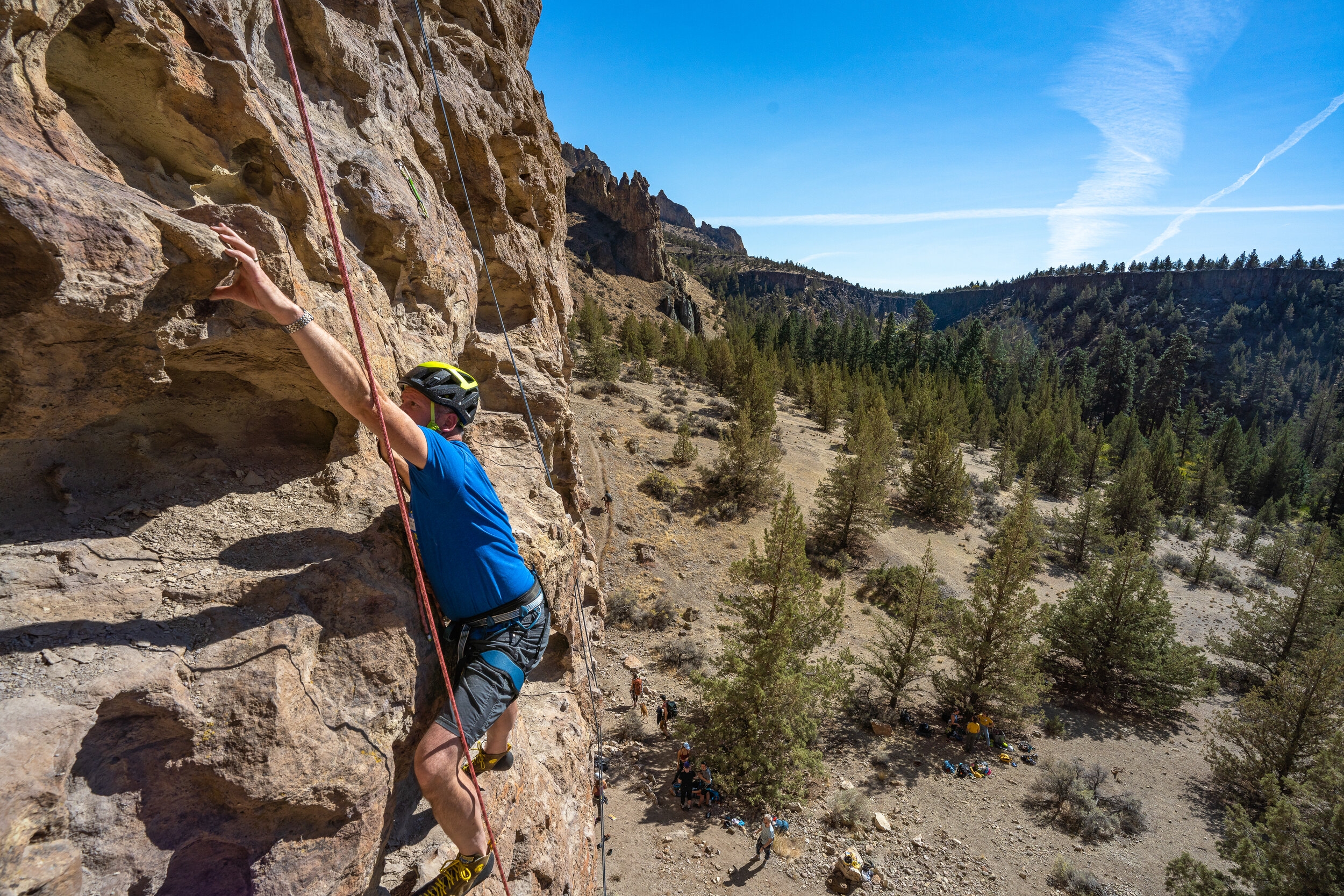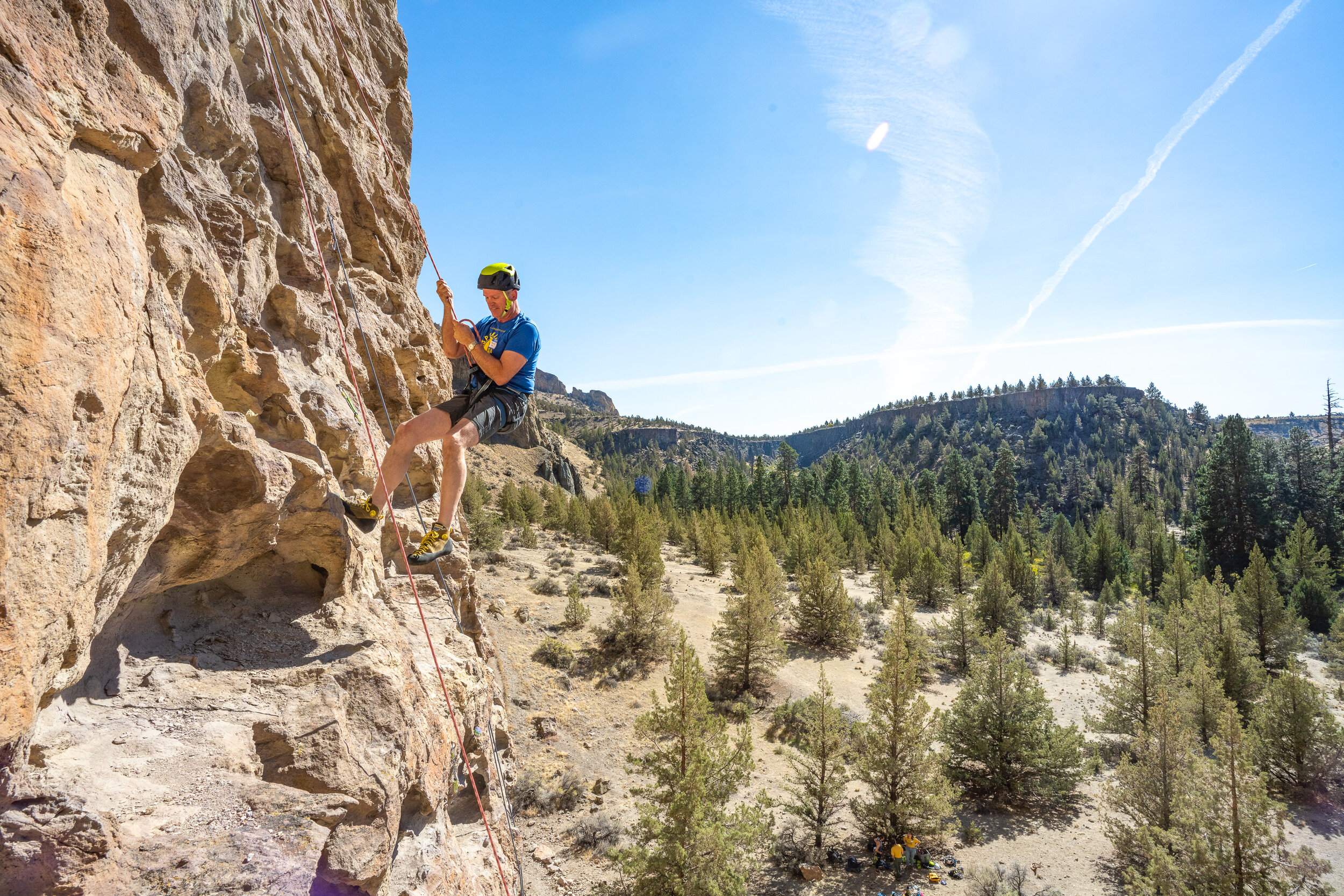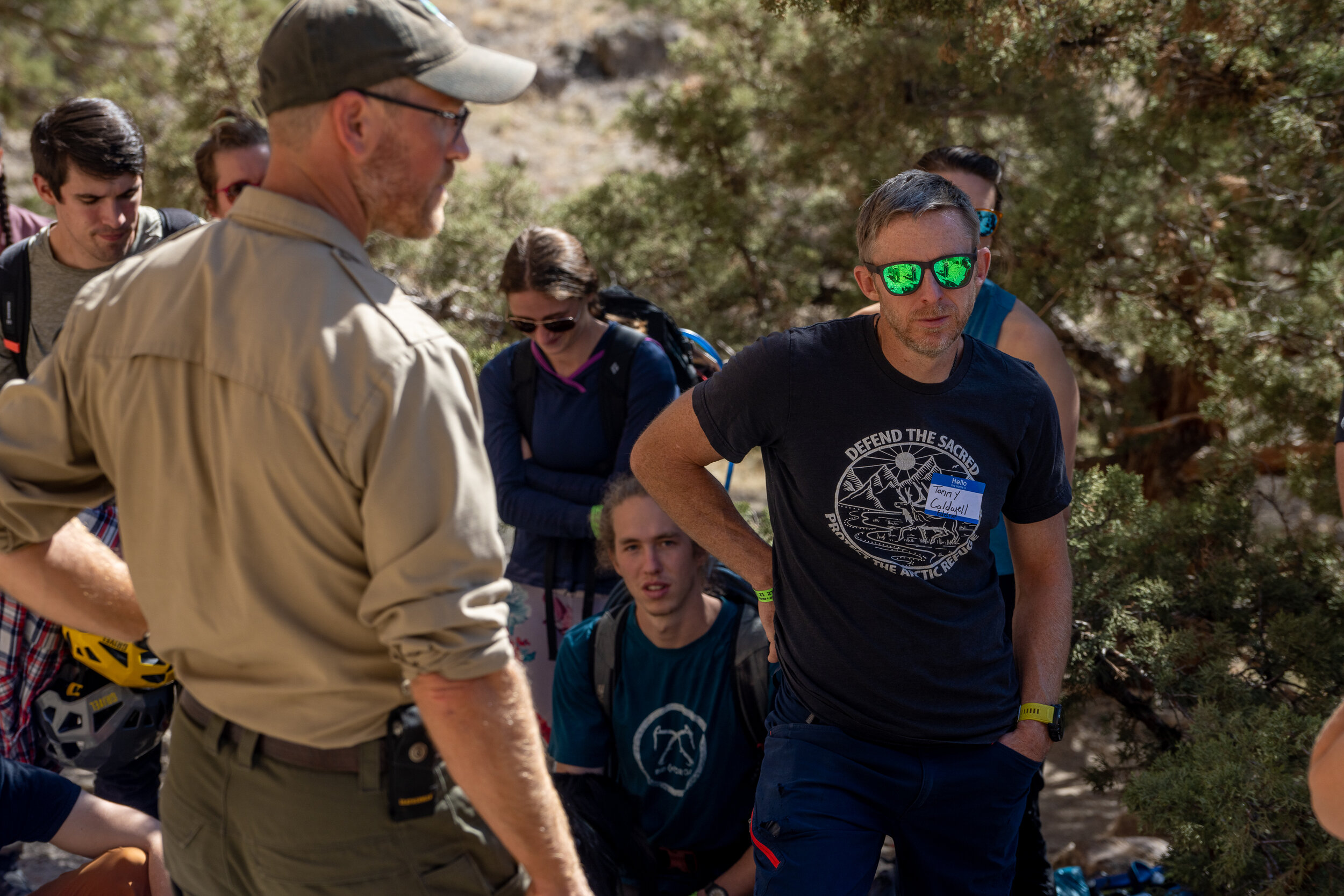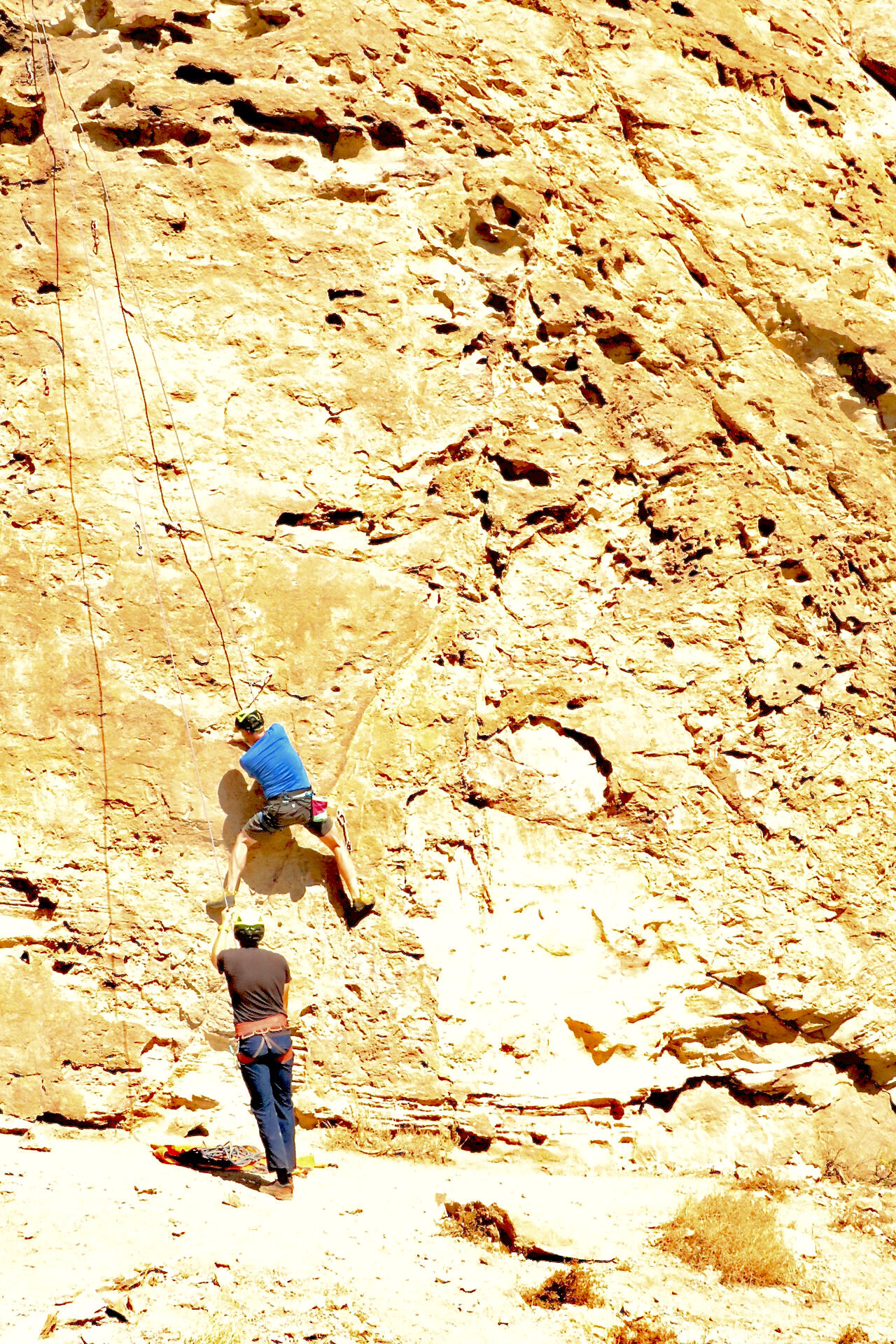On Saturday October 2, an array of land managers, local and state politicians, and Oregon business leaders joined climbing advocates for a day of recreation at Smith Rock State Park. The focus of the event was centered around the future of climbing in the Park, and how climbing positively impacts the economy and vitality of Central Oregon’s surrounding communities. This installment of the American Alpine Club’s Hill to Crag Initiative, presented in collaboration with Edelrid North America, has once again used the comradery and intimacy of a day at the crag to forage connections and honest communication with local and state politicians and land managers.
The AAC’s policy team is committed to illuminating how federal legislation impacts climbers, and our most recent edition of the Summit Register Policy Zine dives deep into initiatives like 30x30 and Protecting America’s Wilderness + Act (PAW+), outlining how these policies can support climate action and conservation efforts that climbers care about across the United States. But the AAC is also well aware of the power of local communities, and how partnerships between climbers and local leaders can pave the way for lasting change.
At this Hill to Crag event, Matt Davey, the Superintendent of Smith Rock State Park, spent the day alongside Oregon decision makers and climbing advocates, speaking about the challenges the Park currently faces and how we can all come together to work towards a sustainable future for Smith Rock. Due to the robust history of climbing at the Park, climbers had a large impact on the modern day stewardship of this landscape. He informed the group that many of the original trails in the Park were built and maintained by climbers. To this day, that has not changed, as organizations like the Smith Rock Group and High Desert Climbers Alliance take the lead on grassroots efforts to maintain and steward the Park. When asked what climbers can do to positively impact Smith Rock State Park, Davey noted that “the best thing climbers can do is get involved with one of the nonprofits like Smith Rock Group, or their local climbing organization the High Desert Climbers Alliance. Then together as a team they can come together and make the biggest impact.”
After learning about the history of the Park and the challenges that exist with its maintenance, local leaders and decision makers were invited to try climbing. It was a very special experience to have professional climber and Edelrid Athlete Tommy Caldwell on belay as Bend County Commissioner Phil Chang and CEO of Economic Development of Central Oregon Roger Lee made their way up routes at the Monument Crag.
Bend resident, renowned alpinist, and AAC board member Graham Zimmerman summed it up best as he witnessed one of his own County Commissioners climbing: “When I see the crew of folks we are hanging out with today I see progress taking place.” Zimmerman has made almost as many trips to DC to lobby in support of climate action and public lands protections as he has into the Karakoram over the years.
“We’ve talked a lot about common ground and that’s pretty hard to do over a mahogany desk in D.C. whereas here, we are on the common ground. We are here enjoying this space together making experiences and memories. These are the foundations we can create policy change on and talk about initiatives we’re interested in, and create that diverse and equitable world we all want to live in,” Zimmerman said.
The day wrapped up at a climber owned and operated restaurant in Terrebonne called The Depot. Jamie and Evan, the owners of The Depot, moved to Central Oregon from the east coast after falling in love with the outdoor access provided by the region, specifically, the access to Smith Rock. According to the US Bureau of Economic Analysis, climbing contributed $5.8 million in gross output in 2019, contributing to the outdoor recreation economy’s total value of 2.1 percent ($459.8 billion) of current-dollar gross domestic product (GDP) for the nation in 2019. Showcasing local businesses that exist due to the access to climbing at Smith Rock felt like a special way to demonstrate the impact that climbers have on local economies too.
Due to the new connections and excitement of the day outside at Smith Rock, it was hard to corral the participants to their seats for the final presentations capping off the day. However, once seated, folks were captivated. Alan Watts, a local climbing legend and original developer of Smith Rock State Park shared the riveting history of how climbing in the region has changed over the years. Roger Lee dove into the economic impacts that outdoor recreation has on Central Oregon, and the exciting new businesses that have moved to the region based purely on the access to the outdoors that this corner of Oregon offers its residents.
Lizzy Van Patten shared an inspiring presentation about the importance of shifting the narrative of “who climbers are” through increasing accessibility and inclusivity of the sport. Sharing her own story and that of her guiding business She Moves Mountains, based in Central Oregon, she concluded her presentation with a direct ask of our federal legislators: Help make permitting more accessible (and ultimately more inclusive) through the passage of bills like the Simplifying Outdoor Access for Recreation (SOAR) Act and the Recreation Not Red Tape (RNR) Act.
“I think that ‘safe’ is not only something that means not hitting the deck. It also means creating safe spaces in which a diverse group of people can participate in our sport. Our systems are dialed for climbing. We know how to belay, how to place good gear, and how to bolt safely. So what we’re working on now is creating that safe space for a broad diverse community.” -Graham Zimmerman
Thanks to the collaboration of these climbing advocates and local leaders, this Hill to Crag event highlighted that climbers are stewards of Smith Rock and many other climbing destinations; that the growing climbing and outdoor industry is an economic driver for many communities; and due to these factors and more, funding for public lands should be prioritized on the local, state, and federal level. After all, nearly 60% of climbing areas are located on public lands (AF Vertical Times).
““AAC’s Hill to Crag was a great community event on a perfect fall day in Smith Rock State Park. I appreciated getting to connect with local business leaders and climbing legends, and through conversation it was clear just how passionate folks are not only about their sport but also the power of outdoor recreation as a positive force for conservation and the local economy.””
““As an elected official it was great to join the American Alpine Club and their network for this event to discuss outdoor recreation in my community – the fun and spiritual renewal it brings to us, the contribution it makes to the local economy, and the ways that local governments can support it. Many actionable ideas to steward the environment, enhance recreational amenities, and support my constituents came out of the day and I look forward to diving into that work.””
If you are interested in learning more about federal legislation that directly impacts our climbing community, check out the Simplifying Outdoor Access for Recreation (SOAR Act), Recreation Not Red Tape (RNR), and Environmental Justice in Recreational Permitting Act.
Big thank you to Edelrid North America and the Oregon leaders and changemakers who came out to spend the day with us:
Cailin O’Brien Feeney, Director of the Oregon Office of Outdoor Recreation
Matt Davey, Superintendent of Smith Rock State Park
Phil Chang, Deschutes County Commission
Roger Lee, CEO of Central Oregon Economic Development
George Endicott, Redmond Mayor
Krisanna Endicott-Clark, Redmond City Councilor
Priscilla Macy, Executive Director of Oregon Outfitters and Guides
Adam Baylor, Public Information Officer for Oregon Department of Fish and Wildlife
Graham Zimmerman, Bend based climber, alpinist, and AAC Board Member
Lizzy Van Patten, Founder of She Moves Mountains
Alan Watts, Smith Rock Climbing Developer and Historian
Alan Collins, Smith Rock Climbing Developer
Rachel Greenwald-Rhoads and Maitreya Sriram of the High Desert Climbers Alliance
Climbers’ Advocacy Network Volunteers: Alma Baste, Sam Masters, Greg Parker and Daniel Kroth


